By Alice Speri, reposted from The Intercept: On very clear days, you can follow the rolling hills surrounding the Palestinian city of Yatta all the way to the Dead Sea on one side, the Negev desert on the other. The windswept landscape offers idyllic views, with clusters of olive trees alternating with narrow rows of cultivated land, patches of shrubs, and the occasional grazing sheep. This is also a unique observation point to watch the reality of Israeli apartheid take hold of the land.
Masafer Yatta, a collection of hamlets in the pastoral hills surrounding Yatta, is one of several areas across the occupied West Bank where the Israeli state has for decades forced out Palestinians and replaced them with Jewish land thieves aka 'settlers'. The goal, as Israeli Prime Minister Benjamin Netanyahu stated plainly after returning to power last year, is to give the state absolute and ultimate control over what he called “all areas of the Land of Israel” —including land widely expected to one day form the territory of a Palestinian state.
The Israeli government has deployed an array of legal and policy pretexts to extend its domination of the West Bank, most notably by supporting the more than half a million Israeli settlers who illegally moved there. Since a new, far-right coalition took power, Israel has been roiled by mass protests that reached an apex this week, as hundreds of thousands of Israelis took to the streets to oppose plans by Netanyahu — who is currently fighting corruption charges — to severely curtail the independence of the country’s judiciary.
But the political crisis means little to Palestinians, including the 1.6 million with Israeli citizenship, who have long viewed Israel’s courts as complicit in their oppression, and the legal system many Israelis are now rushing to defend as an enabler to the regime of racial domination forced upon them.
“Palestinians know that Israel has only ever been a democracy for its Jewish citizens, and never for us,” George Bisharat and Jamil Dakwar wrote in an op-ed for Haaretz this week. “What we are witnessing today is an internal Israeli Jewish struggle over who will administer an apartheid regime over the Palestinians, not a genuine fight for democracy for all.”
Masafer Yatta
Few Israelis took to the streets last May, for instance, when Israel’s highest court put an end to a decades-long legal battle Palestinian residents of a dozen communities in Masafer Yatta had been fighting to stay on their lands — inside what Israel had unilaterally declared a “firing zone.” The proceedings followed Israel’s declaration in the 1980s of a large section of Masafer Yatta as a restricted, military area for the army to train in.
Since then, Palestinians living there faced forcible expulsions, frequent home demolitions, rising settler violence, and a host of other coercive measures seeking to drive them off the land — all while illegal Israeli settlements expanded around them with no consequence.
Last May, their legal battle ended when the same court whose legitimacy hundreds of thousands of Israelis are now fighting to preserve ruled definitively that there are no “legal barriers” to the planned expulsion of Palestinians from the firing zone.
The court — which is Israel’s Supreme Court but rules as the High Court of Justice when deciding matters of state authority, as in the Masafer Yatta case — is made up of 15 judges. The court is being targeted by Netanyahu, who wants to change the way judges are selected as well as the laws the court can rule on, in addition to giving Parliament the power to overturn its decisions.
Last May’s ruling, the final one on the Masafer Yatta case, essentially sanctioned the forcible transfer of Palestinians from the firing zone — even as the forcible transfer of an occupied population is a form of ethnic cleansing and, under international law standards, a war crime.
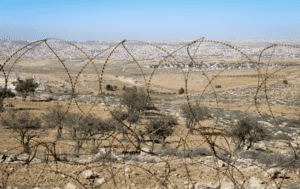
Making life impossible
The Masafer Yatta ruling has brought renewed international attention to this pocket of the southern West Bank and prompted widespread condemnation of Israeli actions. But it has also intensified the Israeli military’s and settlers’ joint efforts to force the nearly 1,200 Palestinians who remain in the firing zone to leave.
Harassment of local residents has become a daily affair, and violent attacks by settlers are on the rise. For the Palestinians who have already lived in limbo for three decades, the court’s decision means that they may now face forcible transfer any day — even as human rights observers note that efforts to drive them out are likely going to be more insidious so as not to draw further global condemnation.
“We don’t believe we’re going to see people put on trucks and being transferred — although it could happen — because of the optics of it,” said Dror Sadot, a spokesperson for the Israeli human rights group B’Tselem, during a recent visit to the firing zone, noting that Israeli authorities did force people onto trucks in an earlier effort to evacuate the area in 1999.
“Instead, what we’re seeing already, and what we think we’re going to see even more, is efforts to make their lives impossible to live. Demolitions, checkpoints, confiscating cars. They really isolate these communities and basically try to do everything they can to make them leave.”
A spokesperson for the Israel Defense Forces wrote in an email to The Intercept that “in the ruling of the Supreme Court on May 4th, 2022, the Court approved the State’s position which determined that at the time of the declaration of the area as a closed zone, the area was uninhabited” — even though dozens of families lived in the area at the time.
“In recent months, dialogue has been held with the Palestinians in the area, in order to enable them to leave the closed zone in an agreed upon and independent manner,” the spokesperson added. “The training zone has great importance for training security personnel including in the use of live fire, which cannot be carried out effectively with civilians present in the area.”
In recent years, a growing number of global human rights organizations has begun to describe the Israeli state’s control of Palestinians as a form of apartheid — a parallel to South Africa that Palestinians themselves had been drawing for decades. The political backlash has been fierce, even as those reports — by Human Rights Watch, Amnesty International, but also the Harvard Law School’s International Human Rights Clinic and the Israel-based B’Tselem — have offered careful legal analysis to explain their conclusions, and referred to an established, legal definition of the crime of apartheid as defined under multiple international statutes.
Left with no other recourse, Palestinians have increasingly taken their plight to the international community and international mechanisms of justice like the International Criminal Court, which includes apartheid under the crimes against humanity over which it has jurisdiction, and which in 2021 opened an investigation on the situation in Palestine.
Until now, those seeking to defend Israel’s conduct have largely done so by referring to its [supposed] democratic character, including the [supposed] integrity and independence of its judiciary, even as Palestinians have long argued Israel is no democracy when it comes to them.
Culture of hyper-legalization
Rabea Eghbariah, a human rights attorney and doctoral candidate at Harvard Law School who has researched legal policies pertaining to land in Israel and the West Bank, noted that the Israeli state has perfected the use of the law as an instrument to control Palestinians, shrouding its actions in a façade of legitimacy.
Dispossession is often disguised as a bureaucratic matter of enforcing the law, with Israeli officials declaring homes illegal and subjecting them to demolition orders, designating land as restricted, and issuing eviction orders.
“There is definitely this culture of hyper legalization and performative law,” Eghbariah told me, pointing for instance to a legal distinction Israel draws between settlements and outposts — even as it mostly treats both equally, and even as both are illegal under international law.
“The whole distinction between outposts and supposedly legal settlements is absurd. But it’s part of the legitimizing force of the law to try to use this façade of rule of law, of supposedly a democratic state, that practices so-called measured violence, and that has checks and balances in place. The law serves as a tool, a technology even, to legitimate atrocities, to rationalize them, and to make them more palatable.”
The protests in Tel Aviv, many Palestinians have pointed out, are an effort to preserve rather than challenge the system that has enabled Israel’s regime of racial domination. “Now all these liberals are roaming the streets outraged because of the idea that the independence of the judiciary is going to be supposedly compromised,” Eghbariah said. “It makes perfect sense: because Israel tries to maintain and use the law in its service.”
That was well on display this week in Tel Aviv, when amid a sea of protesters waving Israeli flags, a lone man waving a Palestinian one — which Israel has banned — was quickly tackled by police and protesters.
Part Two: “Settler Violence = State Violence”
In Part Two of the in-depth article from the Intercept on Israel’s decades-long campaign against Palestinians, read about how the Israeli military partners with settlers, using harassment, violence, and clandestine moves, to control Palestinian land. Palestinians are left with noncontiguous “Bantustans,” where they are still unable to live in peace. (Read Part One here; watch for Parts Three and Four.)
by Alice Speri, reposted from The Intercept, April 1, 2023
For the Palestinians living in Masafer Yatta’s firing zone, the court’s decision sanctioning their forcible transfer has exacerbated the uncertainty and fear that has dominated their lives for generations. [NOTE: read about Israeli firing zones here.]
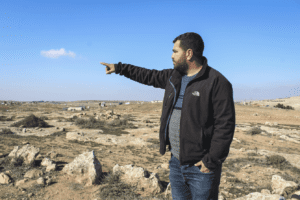
Nasser Nawajah, a community organizer and field researcher for B’Tselem, has been living with his family in Khirbet Susya, a cluster of homes and verdant vegetable gardens near the firing zone, since the 1980s, when the village’s families were forcibly expelled from their original homes in Susya, a few hundred meters away, which Israel had declared an archaeological site.
Since then, Khirbet Susya’s residents have been living with no connection to water and electricity. When they formally applied for access to infrastructure, they were told “No, you’re illegal,” Nawajah told me, even as nearby Israeli outposts were quickly connected to infrastructure.
“At the end of the day it’s just a policy to make Palestinians’ lives miserable in all kinds of ways, firing zones, declaring buildings illegal, calling land ‘state land.’ All the roads lead to making Palestinians’ lives miserable.”
For years, residents of the area have relied on ingeniousness and the solidarity of nongovernmental organizations and activists who have provided them with a microgrid of solar panels and water tanks that the army regularly confiscates and that settlers vandalize.
Settlers also regularly damage olive trees, set fields on fire, uproot vegetables from gardens, and destroy Palestinian property.
In Khirbet Susya, Nawajah pointed to a stone monument that settlers had ripped out, a tribute to a Palestinian baby who was burnt to death along with his family in a 2015 settler attack. Not far from the village, a patch of olive trees was shriveled dry by poison. Signs in Hebrew called on people to report international peace activists to Israeli police.
Nawajah described a combination of daily harassment, increasingly violent attacks, and a seemingly endless stream of new techniques devised by settlers, under the watch of the army, to seize ever-larger swaths of Palestinian land. Sometimes, he said, settlers fly drones over herds of sheep to scare them off course; often, they send their own sheep and livestock to graze on Palestinian crops.
Army of one
A new practice was taking hold in the area, by which a lone, armed settler would set up a “pastoral outpost” on a hilltop, bringing animals to graze on the lands below — a faster and more efficient way to stake a claim on a piece of land than to set up an entire residential community.
Where residential outposts are often made up of a few caravans and makeshift homes, a pastoral outpost only requires some tools, animals, and one person who, using this tactic, can significantly alter control of the land.
“It’s enough to set up something like this to clear out a lot of land that belongs to Palestinians,” Nawajah said, noting that most Palestinian farmers would give up trying to reach that land for fear of being attacked.
During my visit to the South Hebron Hills, one such settler, a young man standing alone on a hilltop overseeing Palestinian crop lands, used binoculars to watch me, Nawajah, and a couple Israeli human rights observers. Then he approached us to ask about the purpose of our visit.
Moments later, a “civil administration” vehicle pulled up: a quiet reminder that we were in the firing zone, where the army could choose to confiscate our car at any point.
“Don’t be fooled by the word ‘civil administration,’” said Roy Yellin, B’Tselem’s director of public outreach, who was with the group that day. “It’s a part of the army that’s in charge of running the civil aspects of the life of Palestinians — but it’s the army.”
Palestinians and human rights observers stress that while the army is ubiquitous in the firing zone, it is not there to protect Palestinian land or lives: It is there to protect settlers or stand by when they attack Palestinians.
In Khirbet Susya two years ago, Palestinian residents filmed a group of adult settlers playing with the children’s toys in the village playground while soldiers watched without intervening.
(The IDF spokesperson wrote in reference to the playground incident that “the video that was published on social media represents only the beginning of the encounter and does not depict the rest of the incident in which the settlers were removed from the playground premises within minutes.”)
The army generally stands by and does little while settlers engage in violence, but sometimes the violence goes too far even for them.
In Tuba, a Palestinian village inside the firing zone near the outpost of Ma’on, settler attacks on Palestinian children have become so frequent and violent that the army now escorts the children on their way to school and back home.
“They’re not doing anything to the settlers, they just escort the children,” noted Sadot, of B’Tselem.
“This is why when we talk about settler violence, we talk about state violence, because you can’t separate it,” she added.
A systemic problem
“A lot of people will say, those settlers are a few bad apples, or something like that. But first of all, they are being allowed to live there even though it’s been declared an illegal outpost, and they get electricity and water, and the army protects them, and nobody’s getting charged when they are being violent. They have the backing of the state and they are all going for the same goal: to take over land from the Palestinians.”
Often the harassment and threats turn into open violence. Nawajah, who has been documenting dozens of such incidents for years, tells his neighbors to continue to report settler attacks to the army so as to create documentation of what happens — even as most Palestinians have given up reporting them because they fear retaliation and because they have come to view settlers and the army as one.
The IDF spokesperson wrote to The Intercept that soldiers are required to stop violations of the law by Israeli citizens, including by detaining them. “A Palestinian who was harmed as a result of an incident of violence or damage to his property can also file a complaint with the Israel Police,” the spokesperson added.
A day before I arrived, a Palestinian farmer was attacked by settlers with brass knuckles, and hospitalized. The settlers were residents of a one-family outpost, Talia Farm, named after a South African convert to Judaism who moved to the West Bank from South Africa in the 1990s, after the end of apartheid there.
“I loved apartheid,” Yaakov Talia, the outpost’s founder, once told an Israeli journalist. “I still think that apartheid is the best thing in the world.”


ABCs of occupation
In the 1990s, the Oslo Accords, with the aim of creating a Palestinian state, divided the Israeli-occupied West Bank and the Gaza Strip into different areas.
The carved-up territory would allow limited Palestinian self-governance in anticipation of an eventual state while, in a nod to Israeli security concerns, letting Israel maintain full control of much of the land.
“Area A” contains the largest Palestinian cities, where 2.8 million people live under the civil and security control of the Palestinian Authority, the home-rule body and the closest thing to a sovereign government Palestinians were ever granted.
“Area B” includes the areas immediately surrounding the cities, under Palestinian civil management and, in theory, joint Palestinian and Israeli security control.
Then there is “Area C”: the largest swath of the West Bank. In addition to encompassing all the Israeli settlements, whether urban or rural, Area C included the pastoral and agricultural land from which Palestinians have drawn their sustenance for generations, and the economic lifeline of any future state.
Covering 60 percent of what after Oslo was widely understood to be the land of a future Palestine, Area C remained under full Israeli military control, with the army frequently and increasingly making incursions into other areas as well.
Over the years, the Israeli government seized on Oslo’s unresolved parameters to deploy an intricate framework of land policies and legal justifications for taking territory that belonged to Palestinians.
Perhaps the most effective tool has been the development of settlements.
Settlement strategy
All Israeli settlements in the West Bank are illegal under international law. As part of the Oslo process, in order to preserve the possibility of Palestinian statehood, Israel committed not to change so-called facts on the ground.
That should have meant no new settlements, but Israeli officials cited what it described as natural population growth as justification to expand existing settlements, building more neighborhoods and towns in the hills surrounding existing ones, often naming each new development with a numeral next to the name of the original settlement.
In addition to those settlements, which in some cases have grown into cities fully supported by the state, more than 140 outposts have sprung up over the years. Those were built by settlers without official authorization, but while authorities occasionally issue — and rarely carry out — demolition orders against outposts, they more often provide them with electricity, water, public transportation, and army protection.
In Masafer Yatta, for instance, the rural areas surrounding Yatta have been cut off from the city by a circle of ever-expanding Israeli settlements and outposts, the latter of which are illegal not only under international law but also even under Israeli law.
Yet in several cases, outposts that were built illegally were later recognized and legitimated by Israeli authorities — as is the case of Avigail, an outpost near Masafer Yatta that the Israeli government “legalized” along with several others in February, ostensibly in response to two attacks carried out by Palestinians in east Jerusalem that month.
Over the years, the settlement enterprise has turned the prospect of a viable Palestinian state into a near-impossibility by precluding both territorial integrity and access to enough land to sustain a future state’s population. Settlements, usually built on hilltops, often with unnaturally narrow and long footprints so as to create a longer barrier, have not only encroached on Palestinian land: they have also effectively cut off one Palestinian community from the other.
Each settlement is also surrounded by a — usually unofficial — “security zone,” in theory a buffer between Palestinians and settlers where nobody is supposed to stand. But settlers have regularly expanded into those areas too, therefore pushing the security zone further and taking over more land.
Overall, in the West Bank, Israeli officials have confiscated more than 2 million dunams, or nearly 800 square miles of Palestinian land, more than one-third of the West Bank — much of it the private property of Palestinians. They have done so under an array of justifications, including the designation of much of it as “state land.” The Israeli group Peace Now, which tracks the expropriation of Palestinian land, estimated that the Israeli government declared up to a quarter of the West Bank state land.
“Bantustans”
B’Tselem, which also tracks Israeli land grabs, found that settlements and the roads and infrastructure that serve them have effectively encircled Palestinians in the West Bank into “165 non-contiguous ‘territorial islands’” — a fragmentation that observers have long compared to apartheid South Africa’s Bantustans.
The reference to Bantustans evokes the pockets of territory that South Africa’s apartheid government designated for Black residents, forcing their resettlement there with the goal of ultimately creating independent “homelands.” This is one of many ways in which Israel’s regime of racial domination over Palestinians has been compared to apartheid South Africa.
The references to apartheid, however, offer not only a historical comparison, but also a legal one. While the South African experience coined the term itself and popularized the concept of apartheid, the crime of apartheid has since been defined and codified in a number of international treaties, including the 1973 Apartheid Convention and the Rome Statute, the International Criminal Court’s founding document.
“Laws, policies, and statements by leading Israeli officials make plain that the objective of maintaining Jewish Israeli control over demographics, political power, and land has long guided government policy,” Human Rights Watch concluded in its 2021 report on Israeli apartheid. “In pursuit of this goal, authorities have dispossessed, confined, forcibly separated, and subjugated Palestinians by virtue of their identity to varying degrees of intensity.”
Part Three: Palestinians As An “Obstacle”
In Part Three of the in-depth article from the Intercept on Israel’s decades-long campaign to rid the land of Palestinians, read about the current situation under Israel’s extremist government, and Israel’s ruthless efforts to evict Palestinian Bedouin inside Israel from their historic land and lifestyle. (Read Parts One and Two here and here; watch for Part Four.)
by Alice Speri, reposted from The Intercept, April 1, 2023
While apartheid policies encompass a range of institutionalized discrimination practices — from restrictions on residency for non-Jews to the recent introduction of legislation that would seek the death penalty for Palestinians only — the element of racial domination that is intrinsic to the concept is particularly evident in Israeli land policies.
“They want maximum land with minimum Palestinians,” said Ori Givati, advocacy director at Breaking the Silence, a group of Israeli veterans opposed to the occupation. “They don’t want to annex tens of thousands of Palestinians because eventually they’ll have to give them citizenship.”
Givati, who served in the military in the West Bank, described a close collaboration between the state — through the military — and the ideological settlers driving the land grab in the West Bank. The two regularly worked together, he said, with representatives of the settlement movement often participating in military drills and speaking to soldiers sent to serve in the territory.
“Basically we’re seeing a system which deprives Palestinians of their lands and aims to push them away from living in Area A, into Areas C and B,” he added, during a visit to the South Hebron Hills. “And that element of using settlements in order to divide the land is very visible here.”
In many ways Masafer Yatta is a microcosm where the dynamics playing out across the entire West Bank are magnified by the designation of the firing zone. Daily harassment of Palestinians, illegal settlement expansion, and settler violence have been growing steadily throughout the occupied territory for years. So has the number of Palestinians killed by Israeli forces — which last year reached the highest toll since the end of the Second Intifada in the early 2000s.
Getting worse
So far, 2023 has been even worse, with Israeli raids in cities like Nablus and Jenin killing dozens, and settlers setting fire to homes and cars in a series of attacks that have been compared to “pogroms” and that were encouraged by top officials of Israel’s new fundamentalist government.
The extremism of the current Israeli government has in many ways laid bare the reality of Israel’s project of domination. As settler violence in the West Bank has reached historic records in recent months, Finance Minister Bezalel Smotrich recently called for a Palestinian village attacked by settlers to be “wiped out,” before being forced to apologize.
And as protests in Israel reached a peak this week, National Security Minister Itamar Ben-Gvir, a settler once convicted of supporting an Israeli terrorist organization, worked out a deal with Netanyahu to delay the controversial judicial reforms in exchange for the establishment of a new security force that will operate under Ben-Gvir’s direct orders — a prospect that some have likened to handing the extremist minister a “private militia.”
But before the likes of Smotrich and Ben-Gvir reached the highest level of the Israeli government, the groundwork for the supremacist project they have championed had been in motion for years, advanced under more liberal Israeli governments as well — much of it unfolding with at best tepid criticism from Israel’s closest allies, including the U.S.
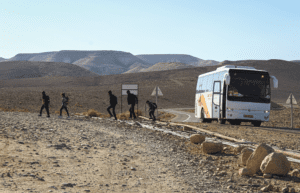
Across the Green Line
While Israel’s expropriation of Palestinian land is most visible in Area C of the West Bank, it is a reality also in Jerusalem, as well as inside Israel, defined as the territory of Israel before the 1967 occupation of the West Bank and east Jerusalem, even though Israel’s borders remain an unsettled matter.
There, like in the occupied territories, an array of laws and legal justifications have resulted in the seizure of much of the land belonging to Palestinians who became citizens of Israel after an estimated 750,000 others were made refugees during the 1948 establishment of the state. Today, there are approximately 1.6 million Palestinians with Israeli citizenship, comprising more than 20 percent of Israel’s population.
Eghbariah, the human rights attorney and a Palestinian citizen of Israel, argued a particularly effective tool deployed by Israel has been the legal fragmentation of Palestinians themselves into different categories, with different IDs, rights, and legal frameworks applying to each. “It’s a regime of legal fragmentation that classifies some Palestinians as citizens, and some as residents of the West Bank, or Gaza, and some as residents of Jerusalem, and each of them have different legal statuses,” he told me. “It designs different tools to experiment. It’s labs of oppression and domination.”
Land grabs inside Israel are often overlooked, Eghbariah added. But there too “is dispossession, there is segregation in the ways that accessibility to resources and land is distributed,” he said.
Since 1948, for instance, officials have authorized the creation of more than 900 “Jewish localities” inside Israel, but have only granted a handful of permits for government-planned townships for Palestinians. Most of those are communities the Israeli state has created for Bedouins that it continues to displace across the Negev desert — even as those Bedouins have for years resisted forced relocation to these poverty-stricken townships.
Bedouins endangered
In the Negev, the historical land of the Bedouins dating back centuries, Israel has announced plans to forcibly displace 36,000 people living in roughly 40 “unrecognized” communities, in order to expand military training areas and implement what it called “economic development” projects.
In total, some 90,000 people live in unrecognized Bedouin communities in the desert, and also face an uncertain future. Adalah, an Israel-based human rights group, has been representing many of the Bedouin communities facing eviction as they fight in court for the right to stay on their land.
“The plan provides clear confirmation that Israel’s Authority for the Development and Settlement of the Bedouins in the Negev overtly discriminates against the Bedouin population,” the group wrote, referring to the government agency set up to handle Bedouin affairs — which Bedouins view as the agency tasked with their oppression.
The agency, according to Adalah, views Bedouins “as an obstacle that must be removed from the landscape in order to clear a path for Jewish settlement and ‘development’.”
That dynamic is not unlike that unfolding in Masafer Yatta, even as the Bedouins targeted for displacement are Israeli citizens. For those Bedouins, who over the decades have watched the desert become urbanized and threaten their way of life, the eviction orders are a bitter irony.
“They call us invaders, they say we are trespassers in this land,” Freij Al-Hawashleh, an 86-year-old Bedouin man, told me when I visited his community, Ras Jrabah, on the outskirts of the industrial city of Dimona.
Al-Hawashleh remembers when the area was under the control of the British Mandate, before the establishment of the state of Israel. One day, after 1948, some officials came to hand the members of his community blue ID cards: their Israeli citizenship. The Bedouins stayed on their land and continued growing their crops.
Then, in the early 1950s, came the first settlers; Al-Hawashleh said that the Bedouins shared water and milk with them when they arrived. “Dimona was established on our land,” he added.
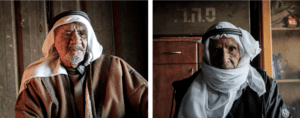
Resisting removal
Today, Dimona is a rapidly expanding city, with construction projects underway on multiple sides. A campaign launched under the previous Israeli government offers an array of benefits to convince Jewish Israelis to move here. On the city’s main thoroughfare, a monument nods to the roots of the city: a mural with the figure of a man in Bedouin dress walking camels across a desert landscape. But that’s as far as Dimona’s recognition of its Bedouin residents will go.
Al-Hawashleh’s community is one of the unrecognized Bedouin villages under eviction orders. The government wants its residents to move to Gasir as-Sirr, one of the townships it has designated for Bedouins, five miles away.
When that proposal was announced, the Bedouins petitioned to stay in Dimona and presented a plan to establish their own recognized neighborhood there — but they were denied and told they could only move to towns specifically created for them.
For now, as construction has continued in the city, the Bedouins have stayed put. Feet away from their homes, the municipality has built a large new playground for Dimona’s children, but the dozens of children living in the Bedouin village only play there late in the evenings, if nobody else is there, adhering to an unwritten rule that they are not wanted there. Still, members of the community have no plans to leave.
“If they want me to move, they can take a gun and shoot me,” said Al-Hawashleh. “I will sit here and never move.”
The Israeli government has shrouded its policy of displacement in the language of modernization and the promise of better services. But the towns Bedouins are moved to are among Israel’s most impoverished and with poorest access to resources, with some of the country’s worst unemployment and crime rates.
Bedouin face demolition, camel confiscation
“The government always tries to tell the Bedouins, ‘If you want services, you need to move. If you want water, you need to move,’” Marwan Abu Frieh, a coordinator with Adalah, told me. “When that doesn’t work, they try to move them by force, by demolition orders.”
Home demolitions, he noted, are becoming increasingly common inside Israel. And as in the West Bank and east Jerusalem, Israel often forces those facing demolition orders to destroy their own homes themselves — or face hefty fines to cover the cost of the bulldozers.
“The same things that are happening in the West Bank are happening here,” Abu Frieh added, noting that the practice has deeply traumatized the Bedouin population. “The same apartheid that’s there, is here.”
Al-Bqea’ah, another of the unrecognized communities facing eviction, stands against the backdrop of Masada, one of Israel’s most iconic tourist attractions, but the state is seeking to forcibly relocate its residents to the township of Mar’it, some 20 miles away.
Next to Al-Bqea’ah, an Israeli-run tourist village offers visitors rides and photos with camels. But while camels have been a part of Bedouins’ lives for centuries, it has become increasingly difficult for them to keep them, as officials have refused to recognize camels as farm animals and have denied their owners grazing rights on lands where they traditionally kept them.
Officials regularly confiscate camels “trespassing” into areas declared off-limits — sometimes lifting them with cranes to transport them away. They then charge exorbitant fees to return them to their owners.
The government’s resettlement plan — in addition to having been established without consulting the Bedouins — is fundamentally at odds with their traditional lifestyle.
“You can’t take a Bedouin from the desert and move him to a town; the Bedouins need freedom,” Moussa Al-Hawamsha, an elderly resident of Al-Bqea’ah, told me. His family has been living there since 1953, when they were moved there by Israeli authorities who evicted them from their original lands near Dimona, to make room for an industrial zone.
When a Jewish man came in the 1980s to set up the tourist village next door, Al-Hawamsha said, they gave him camels and helped him get established; many residents of the village still work at the tourist site. At times, they helped authorities search for hikers lost in the desert, which they know intimately.
“Now, he has a permit to stay, and we are in court,” Al-Hawamsha added, stressing that Al-Bqea’ah’s residents do not want to leave. “If they want to move us again, they should move us back to the land we came from.”

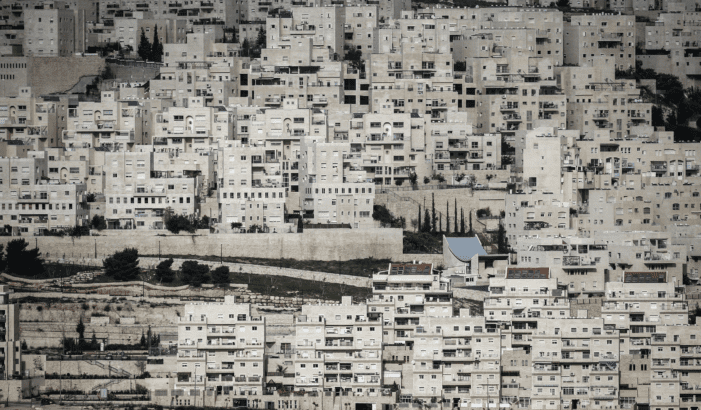
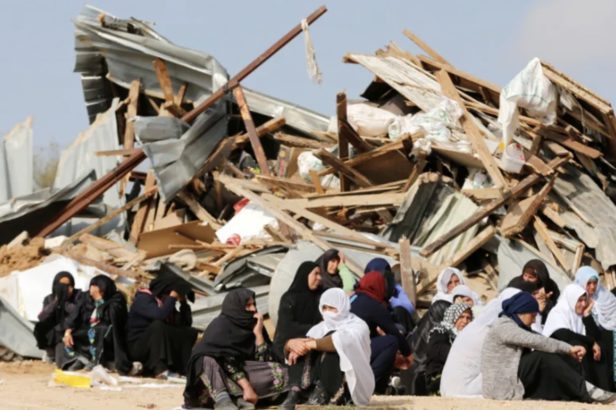
No comments:
Post a Comment